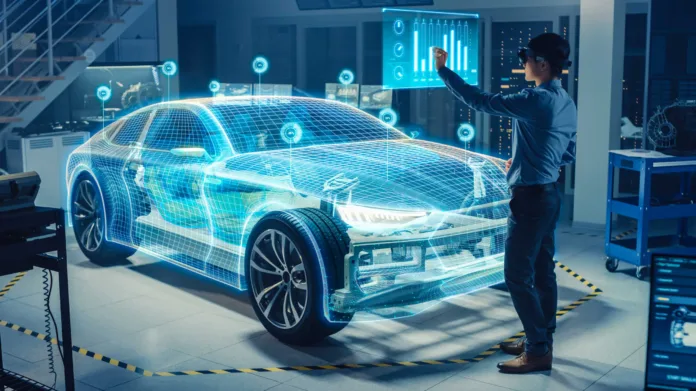
Automotive technology is rapidly revolutionizing the way we experience transportation. From electric drivetrains to AI-powered navigation systems, today’s vehicles are more intelligent, efficient, and safer than ever before. In fact, automotive technology is no longer limited to mechanical improvements—it now encompasses software innovation, data analytics, and even machine learning. These advancements are not only changing how we drive, but also reshaping the entire automotive industry.
The Rise of Electric Vehicles (EVs)
The shift toward electric vehicles has been one of the most significant outcomes of modern automotive technology. With growing concerns about climate change and fuel prices, EVs offer a sustainable alternative to traditional combustion engines. Innovations in battery efficiency, charging infrastructure, and vehicle range are making EVs more accessible to the general public.
Major car manufacturers are investing heavily in electric mobility, aiming to phase out petrol and diesel models within the next decade. This movement is further supported by government policies promoting cleaner transportation and stricter emissions regulations.
Autonomous Vehicles: The Road to Self-Driving Cars
Another game-changing advancement in automotive technology is the development of autonomous vehicles. These self-driving cars use a combination of radar, lidar, cameras, and artificial intelligence to navigate roads without human input. Companies across the globe are in the testing phases of Level 4 and Level 5 autonomy, which promise to eliminate human intervention entirely.
The benefits are enormous: reduced traffic accidents, improved traffic flow, and enhanced mobility for people with disabilities or the elderly. However, challenges remain, including regulatory approvals, safety testing, and ethical concerns.
Connected Cars: Vehicles That Talk
Connected cars represent a new frontier in the digital evolution of vehicles. These cars communicate with each other, the cloud, and external infrastructure to provide real-time data and services. Through V2V (vehicle-to-vehicle) and V2I (vehicle-to-infrastructure) communication, cars can now share information such as traffic conditions, accident alerts, and weather updates.
This connectivity enhances the driving experience by offering better navigation, remote diagnostics, predictive maintenance, and over-the-air software updates. It’s a crucial part of the smart mobility ecosystem and a foundational element of future smart cities.
In-Car AI: The Intelligent Driving Companion
In-car AI systems have made driving smarter and more interactive. From voice assistants that respond to commands to AI algorithms that monitor driver behavior and suggest actions, automotive artificial intelligence is elevating the level of comfort and safety inside vehicles.
AI also plays a pivotal role in adaptive cruise control, lane-keeping assistance, and collision avoidance systems. As machine learning algorithms continue to improve, vehicles are becoming more proactive in ensuring driver and passenger safety.
Vehicle Safety Innovations
The integration of vehicle safety innovations has drastically reduced accident rates and enhanced protection for all road users. Features such as automatic emergency braking (AEB), blind-spot monitoring, and 360-degree cameras are now standard in many models.
Advanced Driver Assistance Systems (ADAS) have become a critical part of modern automotive technology, offering features like pedestrian detection, traffic sign recognition, and drowsiness detection. These systems serve as co-pilots, keeping drivers alert and preventing potential mishaps on the road.
The Role of Big Data and Analytics
Automotive companies are harnessing big data to improve vehicle design, performance, and customer experience. Data collected from sensors and user interactions is analyzed to understand driving patterns, detect faults early, and offer personalized services.
Fleet operators use analytics to monitor fuel efficiency, vehicle health, and driver behavior, leading to cost savings and improved safety. This data-driven approach is now integral to the R&D and post-sales services of leading manufacturers.
Sustainable Materials and Manufacturing
Beyond software and digital innovations, sustainability is a growing focus in car manufacturing. Automakers are now using recyclable materials, 3D printing, and energy-efficient assembly processes to reduce the carbon footprint of production. These initiatives align with global efforts to create greener mobility solutions without compromising on performance.
Conclusion
The future of driving is being redefined by automotive technology. With advancements in electric vehicles, autonomous driving, connected cars, AI integration, and safety systems, the industry is entering a transformative phase. These innovations not only enhance the driving experience but also contribute to a smarter, safer, and more sustainable future for mobility.